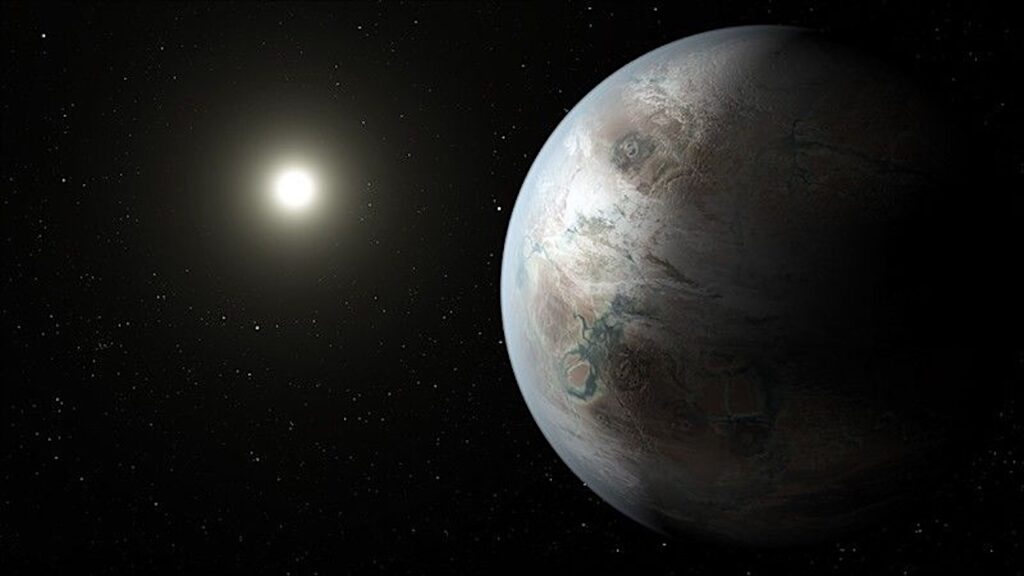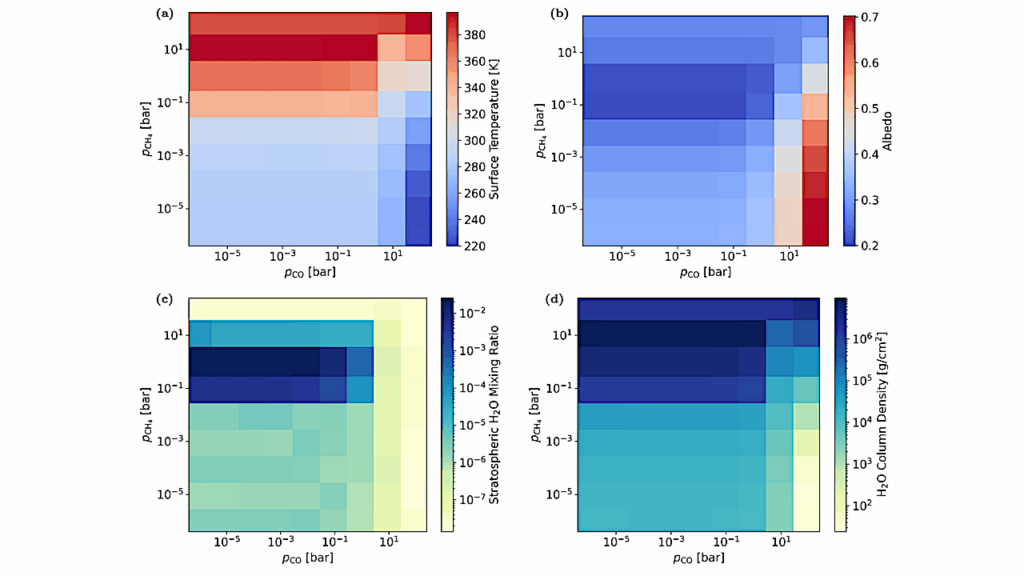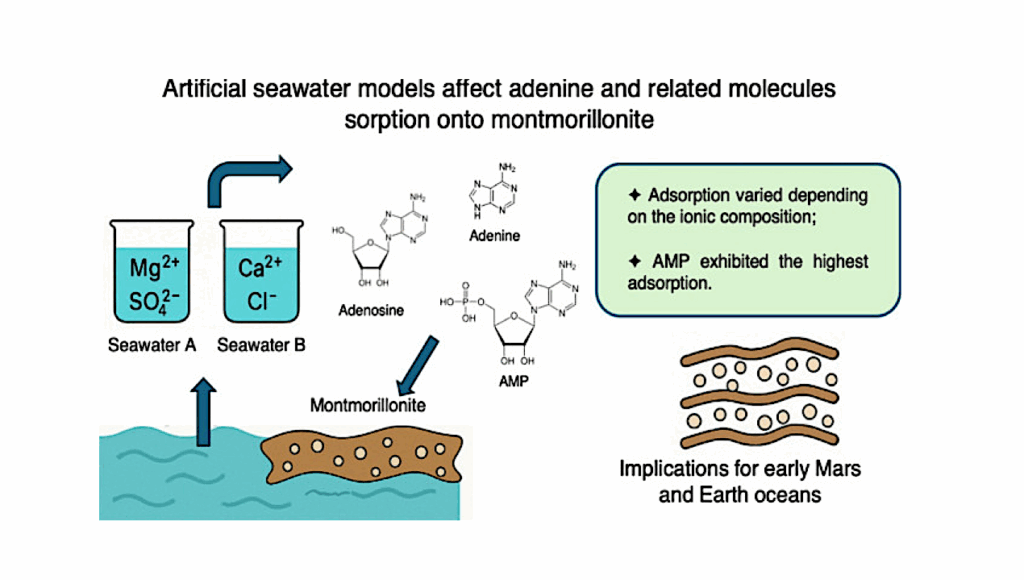Light Scattering Measurements of KCl Particles as an Exoplanet Cloud Analog
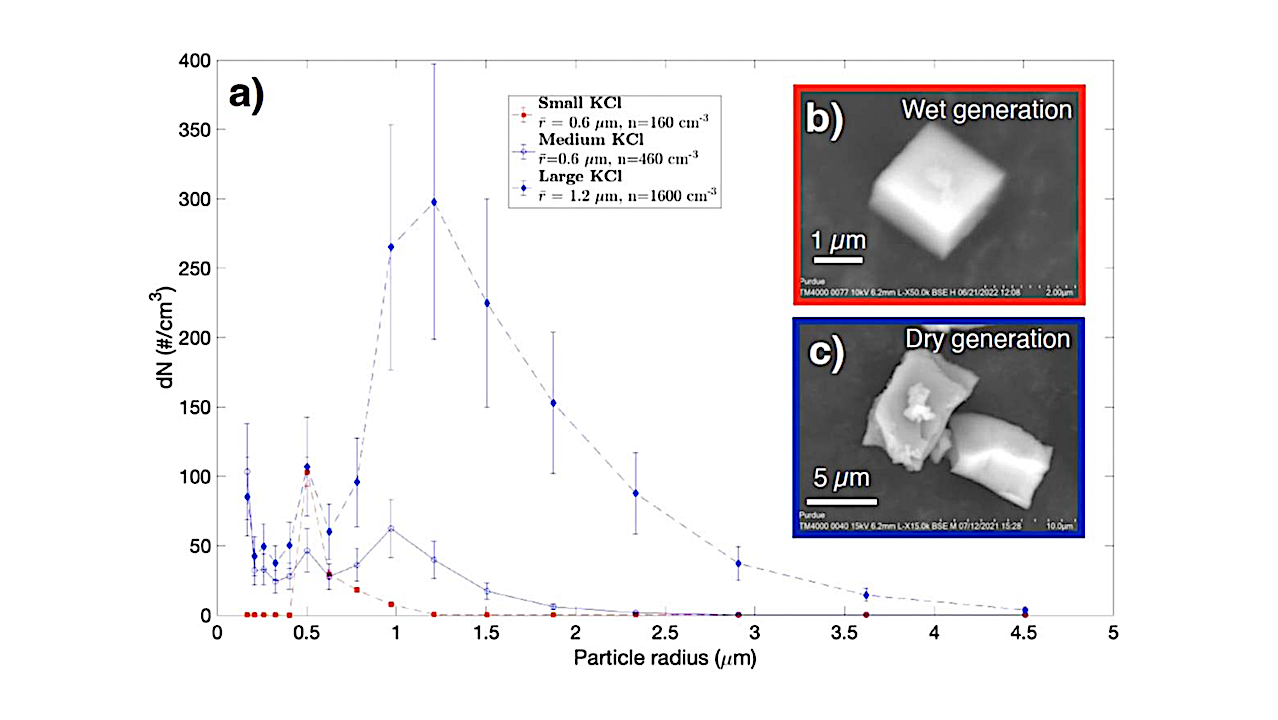
Salt clouds are predicted to be common on warm exoplanets, but their optical properties are uncertain. The Exoplanet Cloud Ensemble Scattering System (ExCESS), a new apparatus to measure the scattering intensity and degree of linear polarization (DOLP) for an ensemble of particles, is introduced here and used to study the light scattering properties of KCl cloud analogs.
ExCESS illuminates particles with a polarized laser beam (532 nm) and uses a photomultiplier tube detector to sweep the plane of illumination. Scattering measurements for KCl particles were collected for three size distributions representative of modeled clouds for the warm exoplanet GJ 1214b.
Our measurements show that Lorenz-Mie calculations, commonly used to estimate the light scattering properties of assumedly spherical cloud particles, offer an inaccurate depiction of cubic and cuboid shaped KCl particles.
All of our measurements indicate that Lorenz-Mie scattering overestimates the backscattering intensity of our cloud analogs and incorrectly predicts the scattering at mid-phase angles (~90 degrees) and preferential polarization state of KCl scattered light.
Our results align with the general scattering properties of non-spherical particles and underscore the importance of further understanding the effects that such particles will have on radiative transfer models of exoplanet atmospheres and reflected light observations of exoplanets by the upcoming Nancy Grace Roman Space Telescope and Habitable Worlds Observatory.
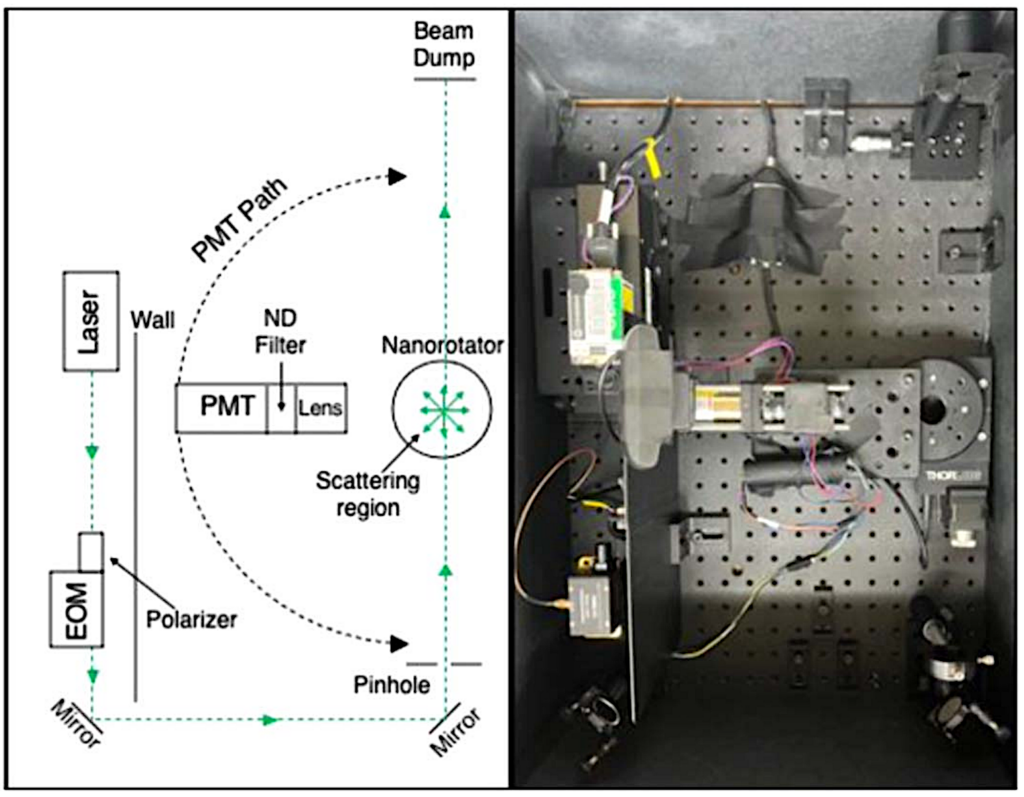
A top-down diagram and corresponding picture of ExCESS. Laser light is passed through an EOM that changes, and rapidly alternates, the polarization state of light before it is directed to the scattering region, where it impinges upon our cloud analog sample. An ND filter mitigates the intensity of scattered light entering the PMT detector. The PMT is mounted onto a stage that rotates around the scattering region where particles are flown in from above (into the page). ExCESS is a compact scattering system, contained within an 18’ × 24’ dark box, that collects measurements from 20° to 169°. — astro-ph.EP
Colin D. Hamill, Alexandria V. Johnson, Peter Gao
Comments: Published in the Planetary Science Journal
Subjects: Earth and Planetary Astrophysics (astro-ph.EP); Instrumentation and Methods for Astrophysics (astro-ph.IM)
Cite as: arXiv:2411.00952 [astro-ph.EP] (or arXiv:2411.00952v1 [astro-ph.EP] for this version)
https://doi.org/10.48550/arXiv.2411.00952
Focus to learn more
Journal reference: 2024, Planet Sci J, 5, 186
Related DOI:
https://doi.org/10.3847/PSJ/ad6569
Focus to learn more
Submission history
From: Colin Hamill
[v1] Fri, 1 Nov 2024 18:05:39 UTC (800 KB)
https://arxiv.org/abs/2411.00952
Astrobiology


